Partner Dance Style Descriptions
Quick Links: Choose below.
- What is Ballroom dancing?
- Brief descriptions of the primary ballroom dance styles
- Descriptions of other dance styles (West Coast Swing, Slow Dance, Cajun Two-Step, etc.)
- Difference between American vs International dance styles
What is Ballroom dancing?
Ballroom dancing refers to a variety of partner dances that are popular in social and competitive settings around the world. These dances are typically characterized by their elegant and graceful movements.
Each of the different styles of ballroom dances has its own unique characteristics and purpose. Some common purposes of different ballroom dance styles include:
- Socialization: Many people enjoy ballroom dance as a way to socialize and meet new people. Whether you’re dancing with a group or with a partner, ballroom dance can be a fun and enjoyable way to spend time with others.
- Exercise: Ballroom dance is a great form of physical activity that can help improve cardiovascular health, increase flexibility and coordination, and strengthen muscles.
- Cultural expression: Different styles of ballroom dance can be used to express different cultural traditions and values. For example, tango is closely associated with Argentine culture, while salsa is closely associated with Latin American culture.
- Competitive dancing: Many people enjoy ballroom dance as a competitive sport, and participate in dance competitions and events.
Whether you’re interested in ballroom dance for socialization, exercise, cultural expression, or competitive dancing, there is a dance style out there for everyone to enjoy.
Brief descriptions of the primary ballroom dance styles
The primary ballroom dances include:
Waltz: This is a smooth and elegant dance that is characterized by its flowing, circular movements and graceful turns. It is typically danced to slower, three-beat music.
Tango: This is a dramatic and passionate dance that originated in Argentina. It is characterized by its sharp, staccato movements and close embrace between the dancers.
Foxtrot: This is a smooth and elegant dance that is characterized by its flowing, linear movements and graceful turns. It is typically danced to four-beat music.
Quickstep: This is a fast and energetic dance that is characterized by its quick and bouncy footwork and sharp turns. It is typically danced to faster, four-beat music.
Viennese Waltz: This is a fast and elegant dance that is characterized by its rapid, spinning movements and graceful turns. It is typically danced to faster, three-beat music.
Cha-cha: This is a lively and energetic dance that is characterized by its quick and intricate footwork and rhythmic hip movements. It is typically danced to cha-cha-cha music.
Rumba: This is a sensual and flirtatious dance that is characterized by its quick and energetic footwork and rhythmic hip movements. It is typically danced to a variety of Latin music, including bolero, cha-cha-cha, and salsa.
Samba: This a lively and energetic dance that is characterized by its bouncing movements and rhythmic footwork. It is typically danced to samba music.
Jive: This is a fast and energetic dance that is characterized by its quick and bouncy footwork and sharp turns. It is typically danced to rock and roll music.
East Coast Swing: This is a lively, energetic dance that is characterized by fast footwork and quick, sharp movements.
Bolero: This is characterized by its slow, smooth movements and close embrace between the partners.
Descriptions of other partner dance styles
West Coast Swing: This is a partner dance that is characterized by its smooth, slotted movement and flexible, syncopated rhythm. It is danced to a wide variety of music styles, including blues, jazz, and pop, and is known for its versatility and adaptability to different music tempos.
Slow Dance: Perfect for wedding dances and parties, Slow Dance is characterized by its romantic and expressive nature, and is often used as an opportunity for couples to get close and connect with each other.
Cajun Two-Step: This is a partner dance that originated in Louisiana. It is closely associated with Cajun music and culture and is typically characterized by its energetic and lively nature.
Difference between American vs International dance styles
There are two main categories of ballroom dance: American style and International style.
American style ballroom dance is typically danced in the United States and Canada, and is characterized by a more relaxed and open body posture, as well as more freedom of movement and expression. Some of the most popular American style ballroom dances include the foxtrot, swing, and tango.
International style ballroom dance, on the other hand, is the style of ballroom dance that is danced in most other countries around the world. It is characterized by a more formal and upright body posture, as well as a greater emphasis on technique and precision. Some of the most popular International style ballroom dances include the waltz, Viennese waltz, and quickstep.
While there are some differences in the way that American and International style ballroom dances are danced, both styles can be enjoyed by people of all ages and skill levels. Whether you prefer the more relaxed and expressive style of American ballroom dance or the more formal and precise style of International ballroom dance, there is a dance style out there for everyone to enjoy.


